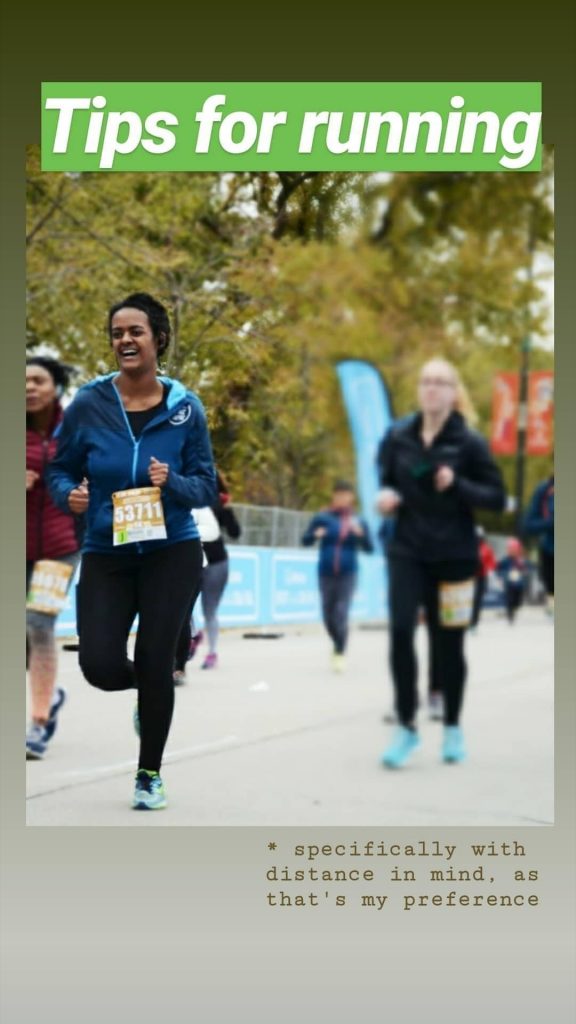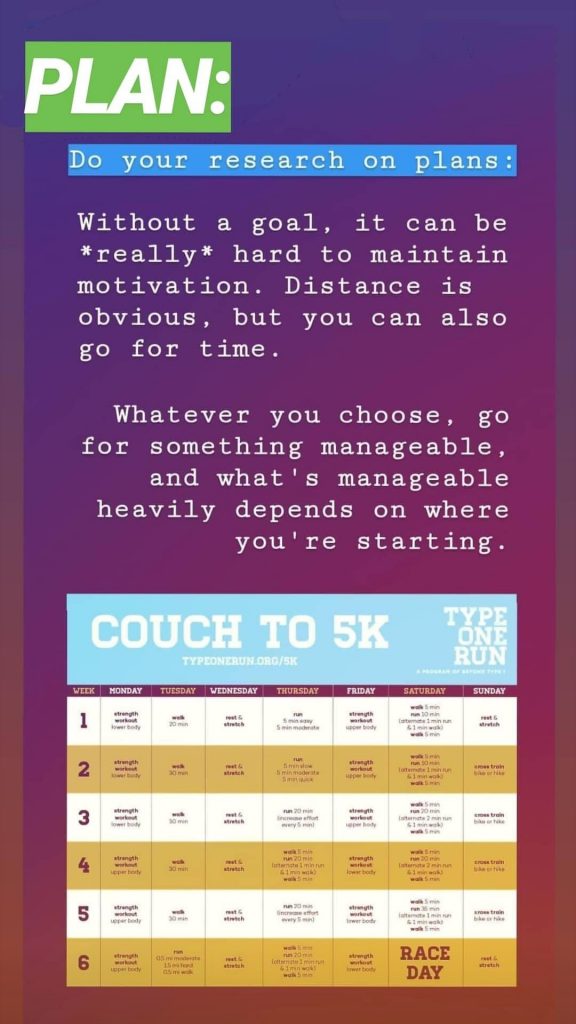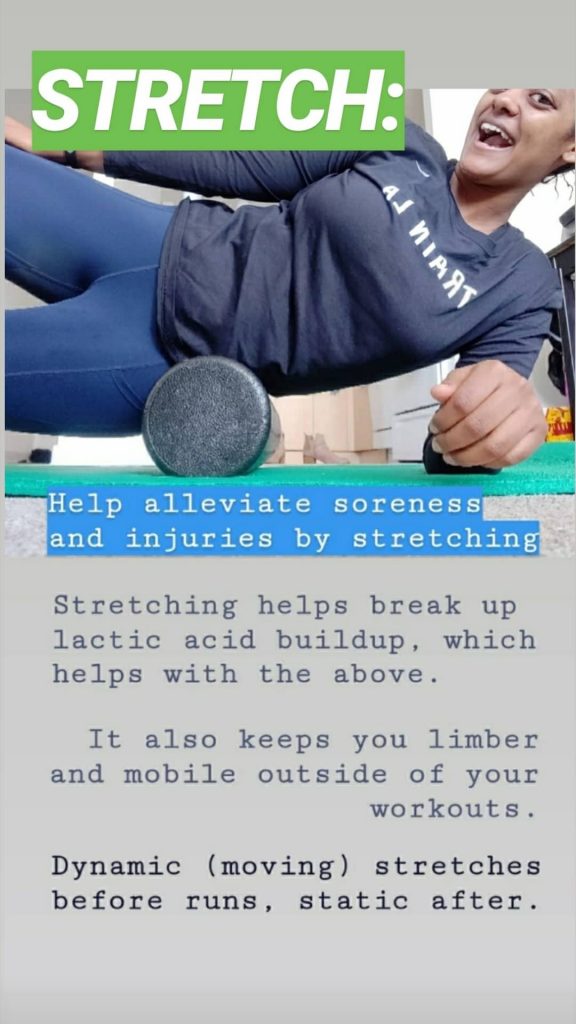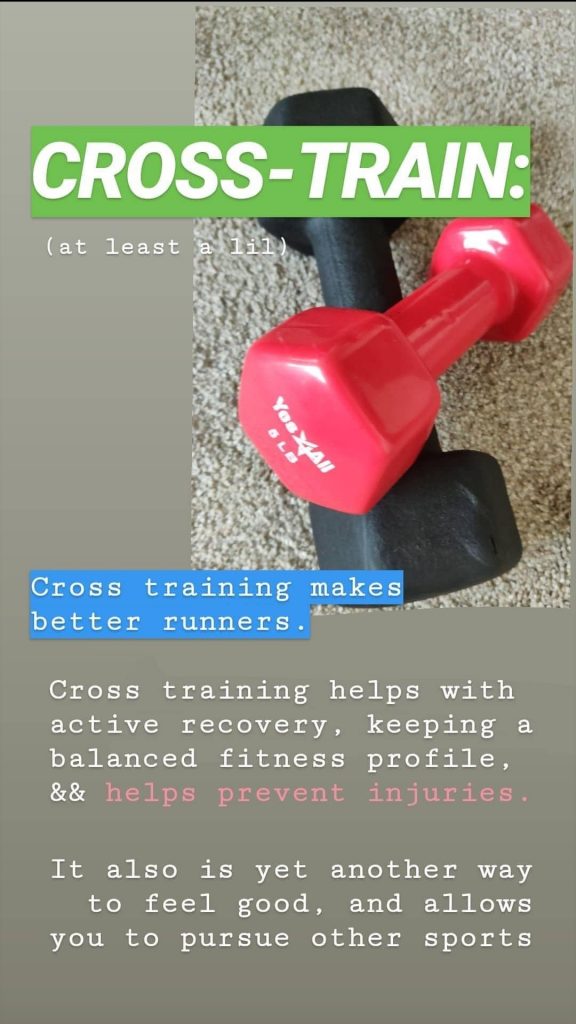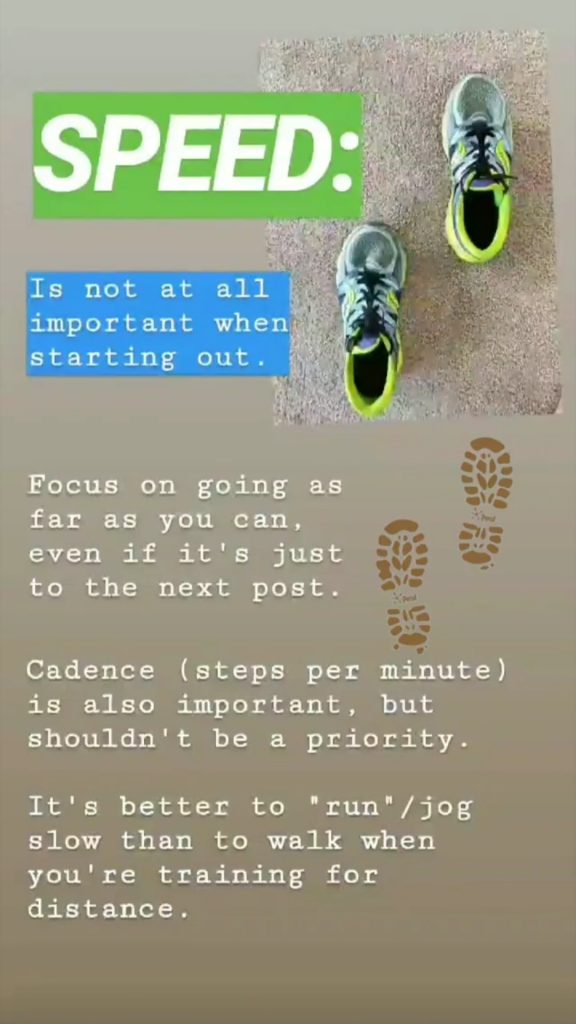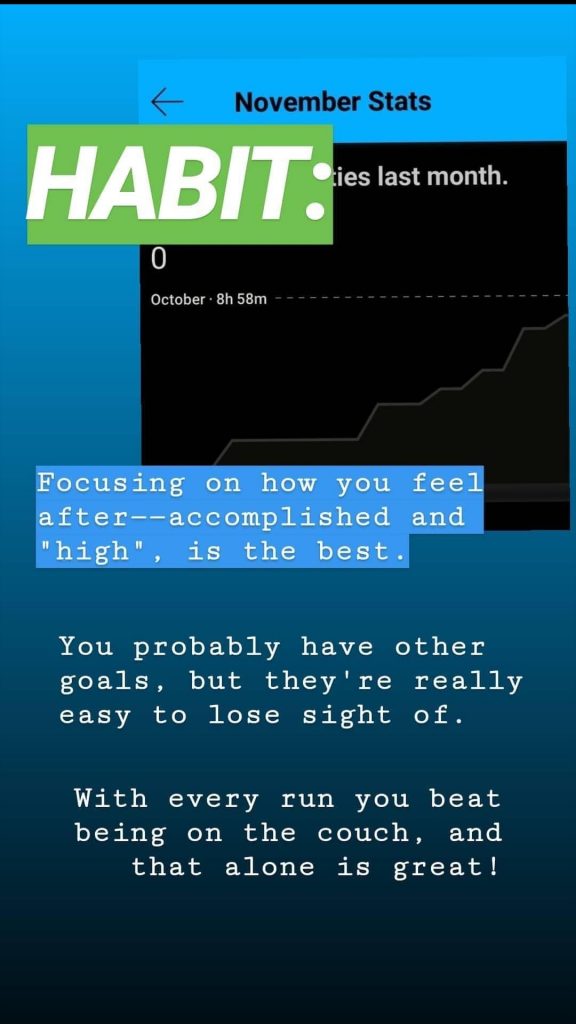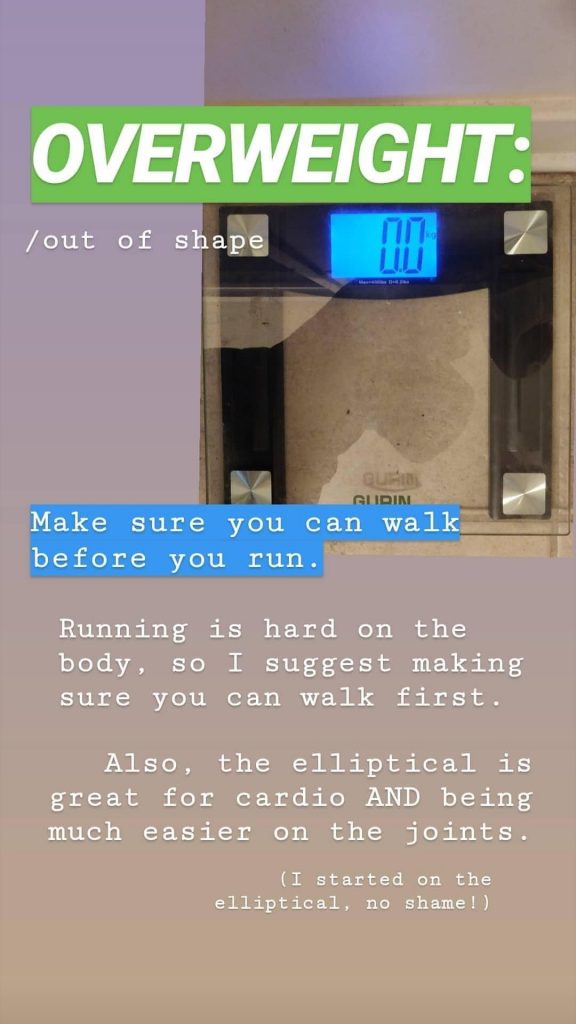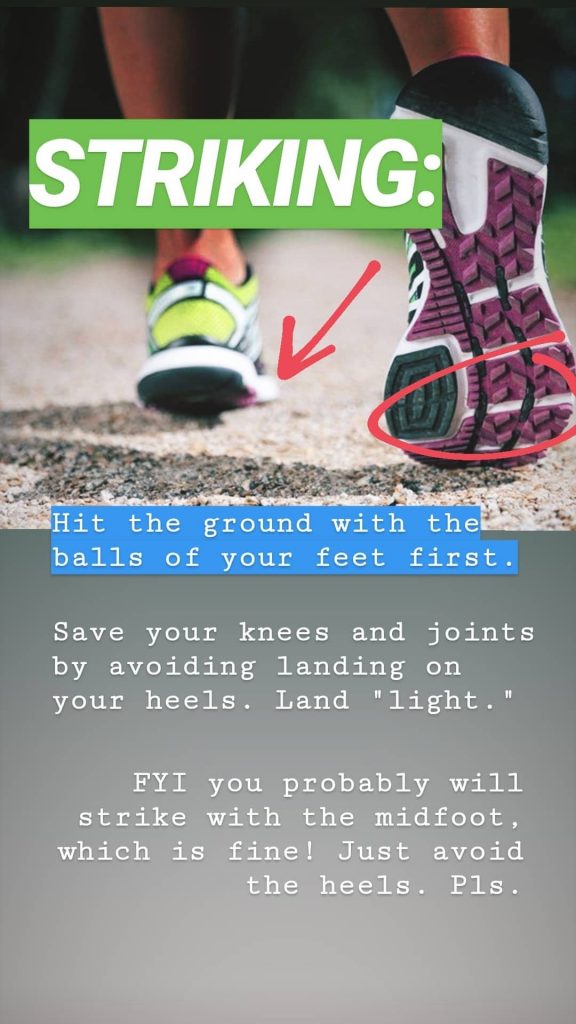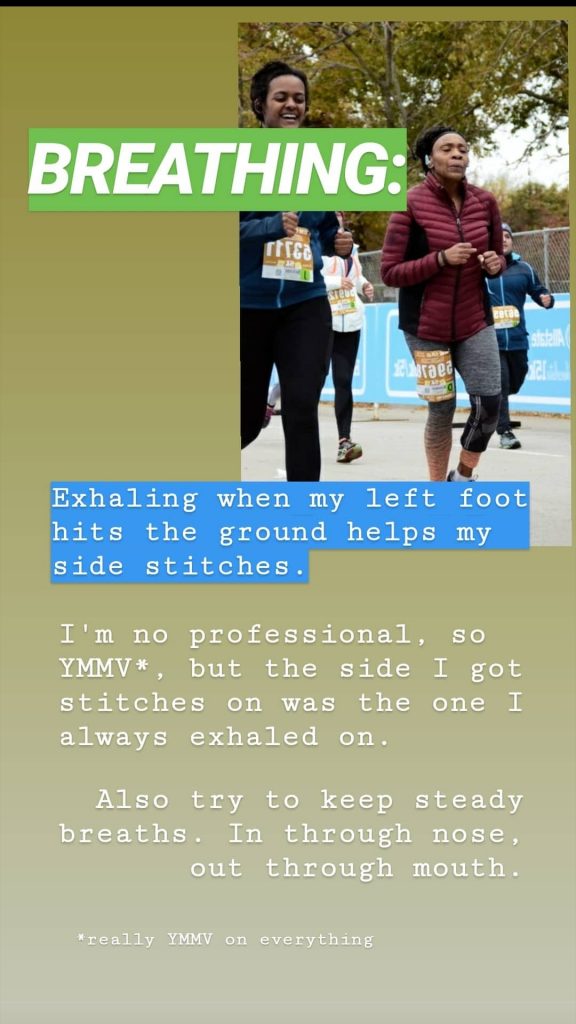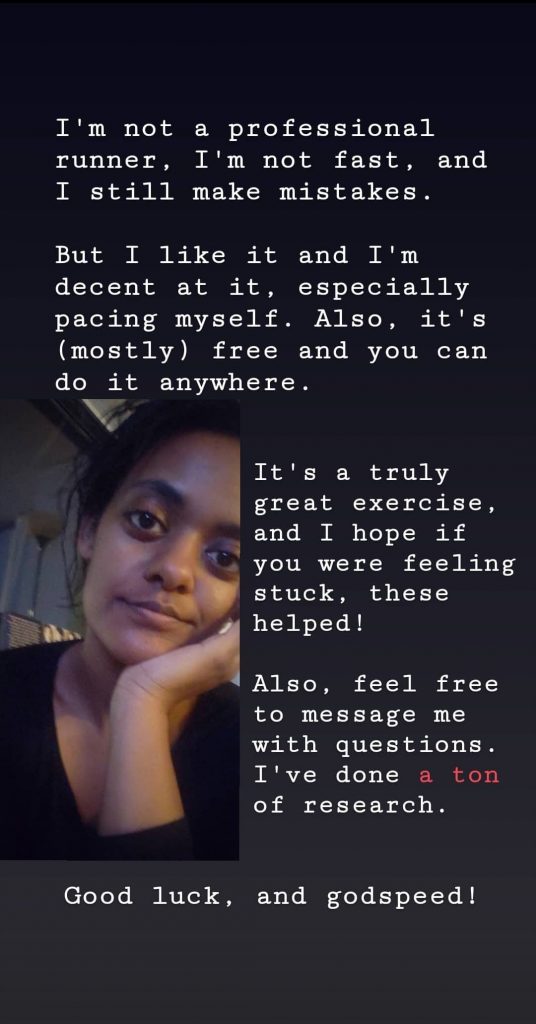Disclaimer: I am not a professional, I’m not fast, and I still make mistakes. But I like running and I’m fairly decent at it, especially pacing myself. Also, it’s free and you can do it anywhere. I hope this helped you, and please reach out or leave a comment if you have questions! I’ve done a ton of research. You can find the original Instagram story at the bottom of the post and in my highlights!
PLAN:
Choose a plan to follow custom to your goals. Without a goal, it can be seriously tough to maintain motivation. Goals can be distance—obviously—or even time based. Whatever you go for, make sure it’s realistic based off of your starting point.
STRETCH:
Help alleviate common injuries and soreness by incorporating stretching into your routine. Stretching helps break up the lactic acid that builds up during strenuous activity, keeping you feeling good and moving better. It’s in your best interest to incorporate some mobility stretches as well, for which I highly recommend Shona Vertue’s videos.

SPEED:
We are going for distance. It can be weirdly embarrassing to be slow, to which I have two solutions: 1) remember you’re lapping everyone on the couch and 2) switch your tracking to kilometers (or miles if you know km.) Remember it’s better to “run”/jog slowly than to walk. Cadence is also something you can focus on (keeping steps frequent, even if they’re short.)
DISTANCE:
Run as slow as you need for the distance you’re going. Semi-related to the previous point, but pace is essential when going for distance. When on long runs, if you can’t have a conversation or yell, “On your left” because of breathing, you’re going too fast. Distance is hard on the body, so you must take it easy as you’re building mileage.
CROSS-TRAIN:
Cross-training makes better athletes all around. It’s why swimmers train on land too. In addition to obtaining a more balanced fitness profile, cross-training allows athletes to pursue other desired sports and prevent injuries from over-use and undergoing active recovery. I cross-train with krav maga. I know a lot of people do cross-fit and weight training as well.
STRIKING:
Hit the ground with the balls of your feet first. Save your knees and joints by avoiding landing on your heels. This helps you land “light.” It also helps you keep your energy moving horizontal rather than vertical. FYI: you will probably end up striking with your midfoot. This is fine! Anything BUT the hard heel.
BREATHING:
I will not even pretend to be a professional here, but exhaling when my left foot hits the ground helps me avoid side stitches. If anything I’d try to distribute your breaths in threes so you exhale on alternating feet, but this rhythm can be difficult. Regardless of what you choose, keep your breaths as steady as possible—in through the nose, and out through the mouth.
HABIT:
The best ways I’ve been able to incorporate working out into my habits: an expensive but worthwhile gym membership (thanks Krav Maga!) and focusing on the high and sense of accomplishment I feel after a run. Whether it was a good or bad workout, it was a workout. And regardless of my other goals, I hit this one, and that’s pretty cool.
OVERWEIGHT:
Make sure you can walk before you run. Running is hard on the body, and I would not jump into it lightly. I also highly recommend using an elliptical and preparing your joints lightly before running outside on the hard, unforgiving pavement.
